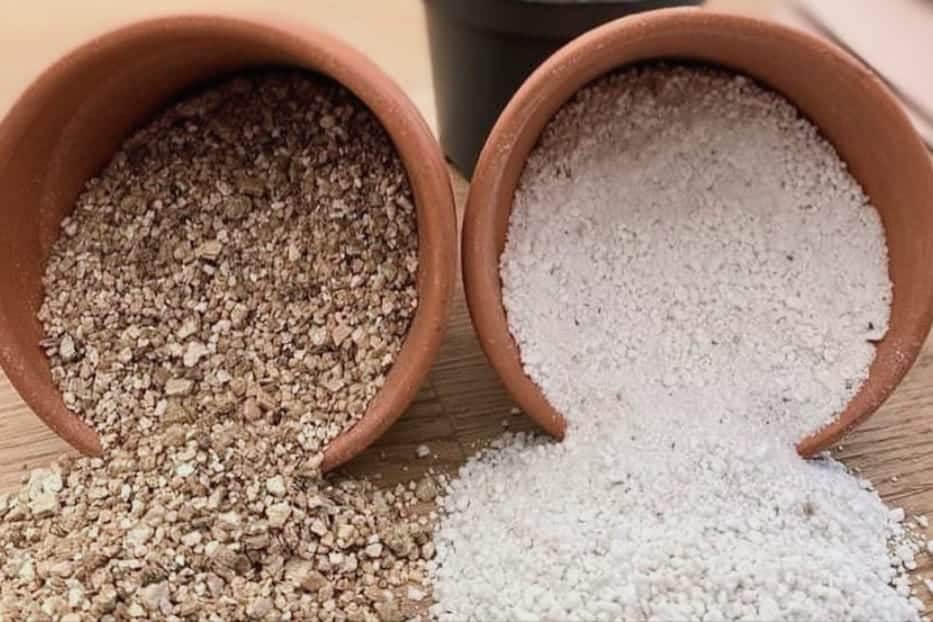Vermiculite is a gardener’s secret weapon—an inert, fluffy mineral that enhances your soil without changing its chemistry.
Whether you’re a newbie or seasoned with a green thumb, this guide explains what vermiculite is, how it works, why it matters, and how to use it effectively.
What Is Vermiculite?
At its core, vermiculite is a form of mica—a hydrous phyllosilicate mineral—that expands when heated, much like popcorn.
This process, called exfoliation, bursts the mineral into lightweight, worm-like flakes. The end result? A sterile, airy, silvery-gray material that doesn’t alter soil pH and is free of pathogens.
Why Vermiculite Works Wonders in Soil
Vermiculite’s magic lies in its structure:
- It soaks up water many times its weight, then releases it gradually to thirsty roots .
- Its flaky, porous form holds onto nutrients—though it doesn’t provide them itself—making them available over time .
- When mixed with dense clay or sandy soil, it creates a lighter, more breathable texture—improving both aeration and moisture balance .
The Upsides of Using Vermiculite
Adding vermiculite to your garden or potting mix brings several benefits:
- Lightweight soil — ideal for containers and hanging baskets .
- Superior water management — it absorbs and retains water like a sponge.
- Neutral pH — safe for almost any plant without tweaking soil chemistry .
- Longevity — it doesn’t break down over time, offering lasting soil improvement .
- Disease-safe — sterile by nature, vermiculite reduces the risk of introducing pathogens .
Consider These Drawbacks
Nothing’s perfect—here are a few downsides to mind:
- Non-renewable resource — vermiculite is mined, making its supply finite .
- Dust exposure — the fine particles may irritate lungs or skin .
- Overly moist conditions — it may hold too much water, so avoid using it for drought-prone plants .
- Mixing challenges — the fine flakes can be tricky to distribute evenly in the soil.
Safety Tip: A historical mine in Libby, Montana, produced asbestos-contaminated vermiculite, but all horticultural-grade vermiculite today is tested and considered safe . To minimize dust, dampen vermiculite before handling and work outdoors or in a ventilated space .
Where and How to Use Vermiculite
1. Boosting Potting Mixes & Containers
Combine vermiculite with potting soil to improve water retention and aeration. For moisture-loving houseplants, a blend of 1 part vermiculite to 2 parts potting mix works beautifully .
2. Seed Starting & Cuttings
Whether used alone or with compost, vermiculite provides consistent moisture and supports fragile roots—making it perfect for germination and propagation .
3. Amending Garden & Raised Beds
Improving clay or sandy soil? Reach for vermiculite. It creates air pockets and holds moisture—plant roots will thank you .
4. Storing Bulbs & Root Crops
Layer vermiculite around bulbs or tubers in storage. It stabilizes moisture levels and prevents rot or mildew .
5. Enhancing Accessibility for Worms & Lawns
Sprinkle vermiculite into worm bins to improve aeration, or add it to newly seeded lawns to retain moisture and reduce watering frequency .
Vermiculite vs. Perlite: What’s the Difference?
Though often used interchangeably, vermiculite and perlite each offer unique benefits:
| Feature | Vermiculite | Perlite |
|---|---|---|
| Moisture | Absorbs and retains water | Holds water in surface pockets |
| Drainage | Moderate | Excellent for drainage |
| Use Case | Moisture-loving plants, seed starting | Succulents, drought-tolerant mixes |
| pH Impact | Neutral | Neutral |
| Nutrients | May hold nutrients | Does not retain nutrients |
When to Use Which:
- Vermiculite: Ideal for seed trays, ferns, peace lilies, or any setup needing steady moisture .
- Perlite: Better for cacti, succulents, or rescue mixes where drainage and airflow are key .
Many gardeners strike a balance by using both—vermiculite for moisture, perlite for airflow.
What Gardener Communities Say
On Reddit, hobbyists share real-world uses:
“Think of it like perlite that holds moisture… you can use it to root cuttings or a thin layer on top of soil to help germinate seeds.”
— LeanaCecelia
“Really helpful for moisture retention and aeration… [I] use it to cover planted seed trays to limit damping off.”
— Money-Librarian7604
Tips for Safe & Effective Use
- Dampen before mixing to reduce dust inhalation.
- Match to plant needs—avoid using vermiculite with plants that prefer dry environments.
- Blend consistently—use fine-grade for seedlings, coarser for container or bed applications.
- Combine smartly—a mix of vermiculite and perlite often delivers the best of both worlds.
Final Thoughts
Vermiculite is a versatile, dependable mineral that elevates your soil’s structure, moisture retention, and aeration—without shifting the chemical balance.
Whether you’re starting seeds, repotting indoors, or improving garden beds, it’s a smart tool in any gardener’s kit. Just remember to handle it safely and choose the right blend for your plants’ needs.
